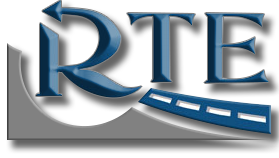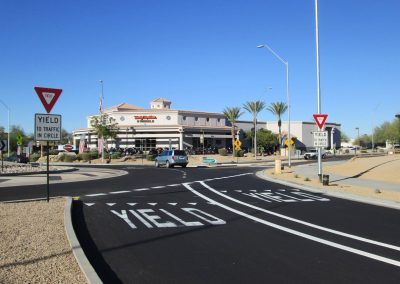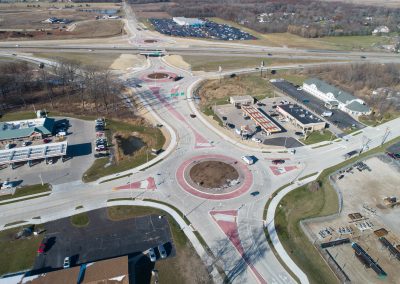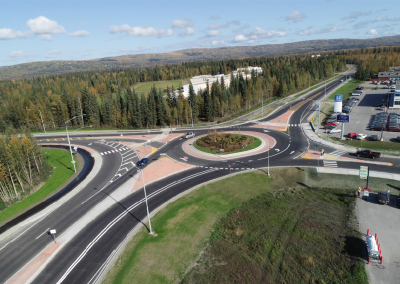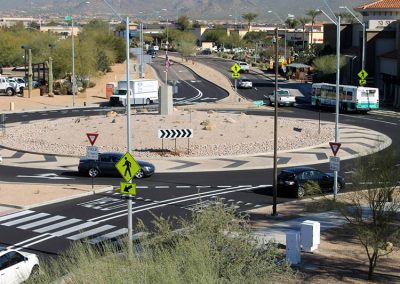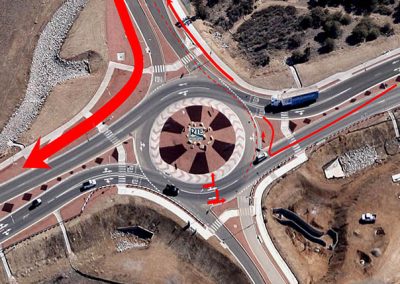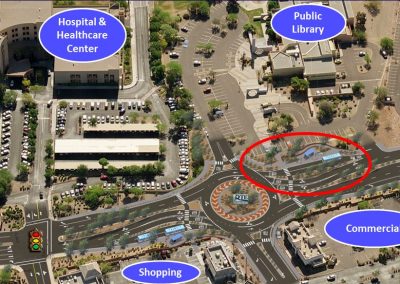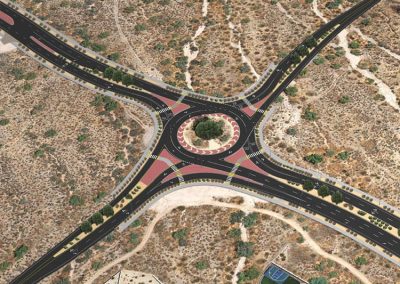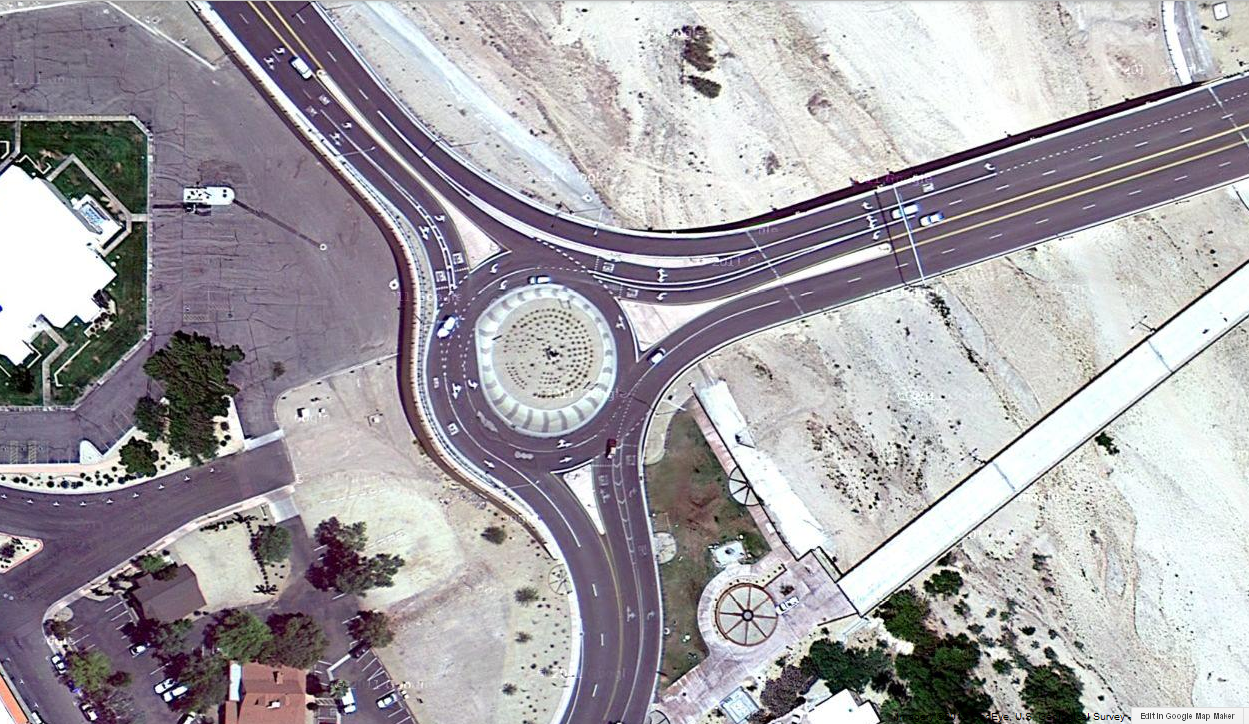RTE | PROJECTS
multi-modal innovation
For over 20 years Scott Ritchie with RTE has pioneered and successfully implemented many innovative multi-modal improvements within modern roundabouts. Some of the key multi-modal features Mr. Ritchie has developed are:
- Transit: Exclusive Bus Stations in Entry
- Vehicles: Turbo Roundabouts in the U.S.
- Trucks: Accommodating Trucks “In-Lane”
- Bicycles: Grade Separated Bike Lanes
- Pedestrians: Textured Multi-Use Paths
- Access Management: Driveway Treatments
- Emergency: Direct Access for Fire Stations
- Railroad: Trains Through Roundabouts
- OSOW: Special Operational Features
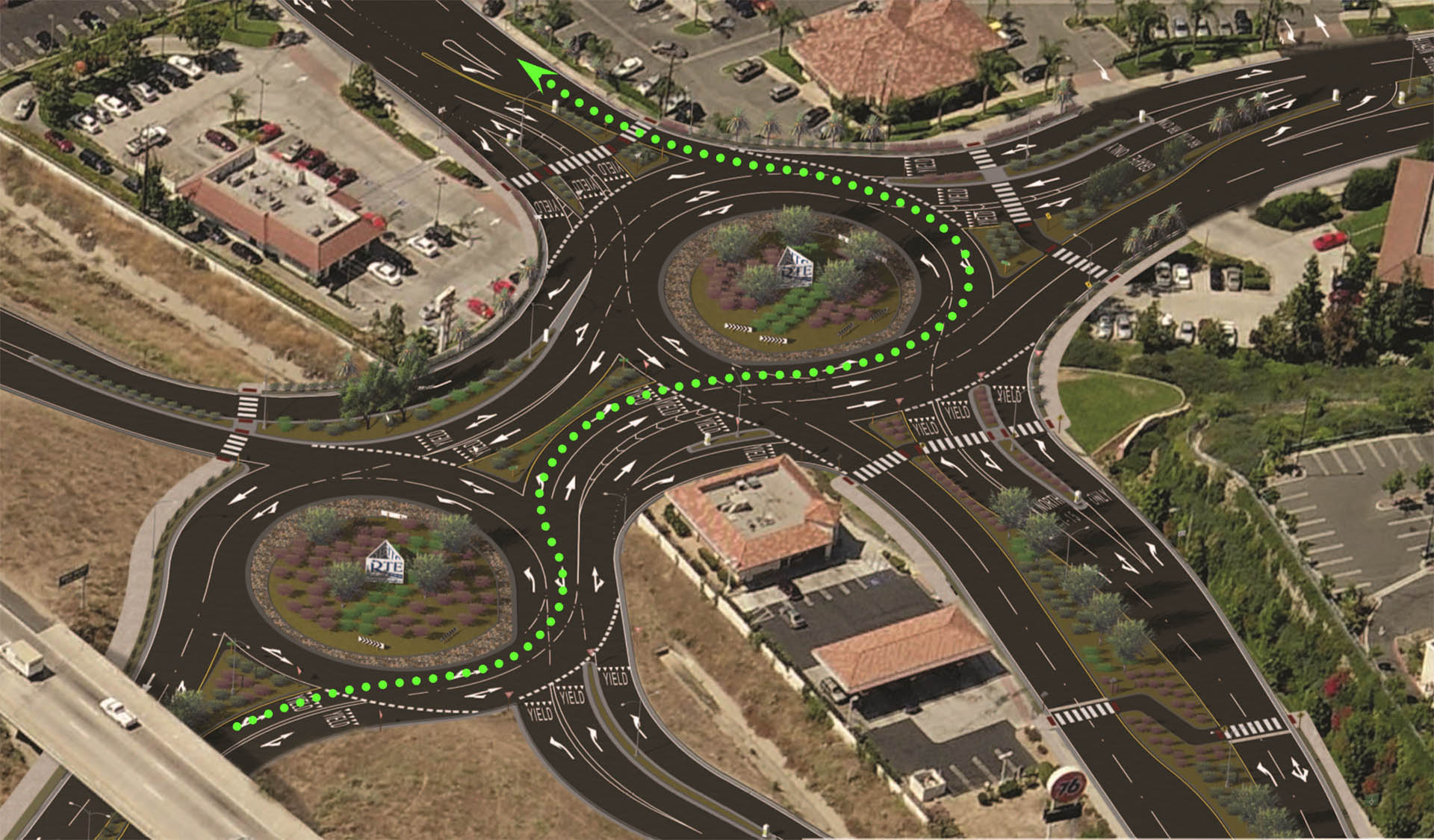
MINI Roundabouts
In 2009, RTE was awarded an exclusive contract with the Federal Highway Administration’s (FHWA) Mini Roundabout Team for studying, developing templates for FHWA information broadcasts, and implementing mini roundabout designs throughout the United States due to our past experience. The Mini Roundabout is one of the most effective and efficient low volume intersections currently available. Some mini roundabout primary features include:
- Better Alternative to Stop
- Better Alternative to Signal
- Good in Tight ROW
- Better LOS
- Better Safety
- Poor for Trucks Turning
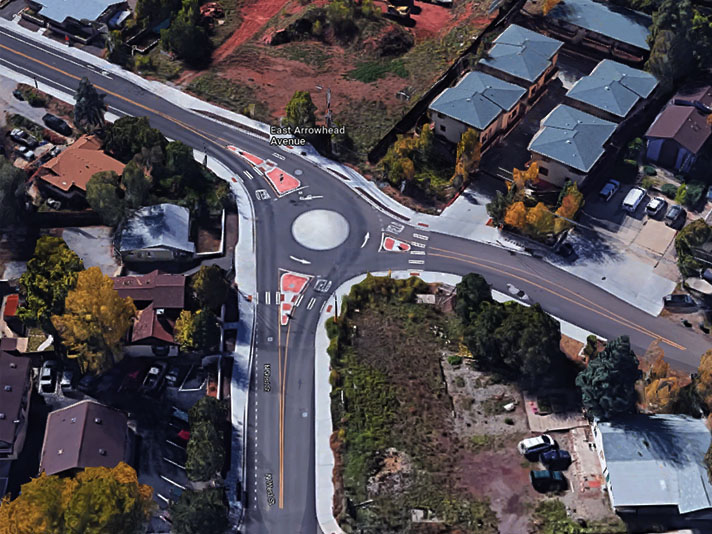
trucks stay in lane
The President of RTE, Scott Ritchie, developed the first roundabouts to accommodate freight trucks to stay in lane within the entry of a modern roundabout. Specific design characteristics based on sound design principles has allowed the modern roundabout to safely function with freight trucks to remain “in lane” without traversing into adjacent travel lanes and maintaining slow 25 mph entry speeds.
In 2012, during a state sponsored nationwide truck study, RTE proved the accommodation of large trucks can be established while maintaining safety and capacity demands without large roundabout sizes and without increased ROW impacts. Consquently, Mr. Ritchie [RTE] was selected to write the design guidelines for roundabouts. The results thereof allowed multiple state DOTs such as the Oregon Dept. of Transportation to lift multi-lane roundabout restrictions and allow multi-lane roundabouts to be implemented with safe truck accommodations. Scott has pefected these design methods over the past few decades.
A summary of the benefits of RTE’s design style for trucks include:
- Safer Traffic Operations
- Fewer Conflicts / Accidents
- Higher Capacity / Less Delay
- No Damage to Curbs
- Smoother / Longer Entry Radii
- Better Public Acceptance
- Trucks Can Get to Yield Line
- Urban or Rural Environment
- No Peak Hour Capacity Issues
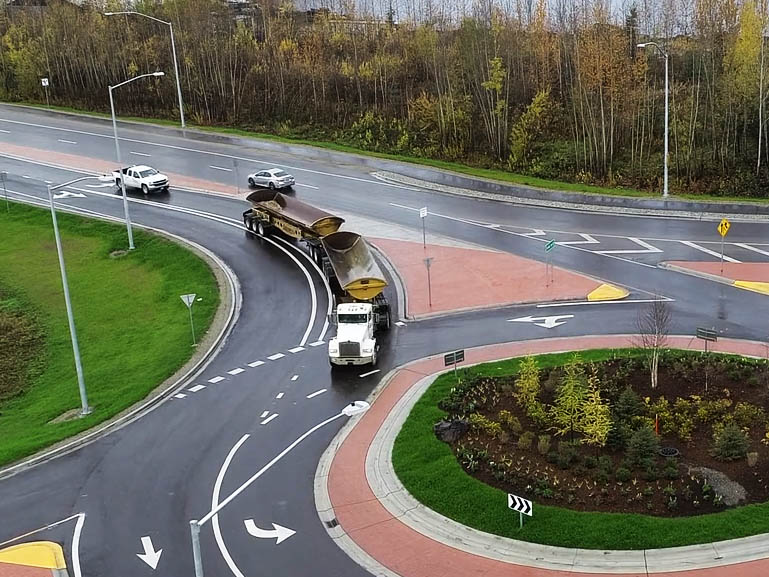
high speed approaches
In 2004, Scott Ritchie with RTE produced a nationwide study [High Speed Approaches at Roundabouts] proving roundabouts are appropriate on high speed roadways. Mr. Ritchie provided design treatments and methodologies to properly implement roundabouts in rural and high speed roadways environments which are now known as the standard of practice for roundabout design and engineering.
The key to all modern roundabouts is proper deflection or speed control (without it, we only have traffic circles or large rotaries – unsafe devices). The second attribute is proper geomtric design to appropriately slow traffic prior to the entry (prior to the yield line) with an adequate line of sight. The last part of the solution entails proper signing and striping methods where Mr. Ritchie developed the first Internationally Recognized Roundabout Signs (TRB, 2005) document to supplement high speed approach treatments at roundabouts.
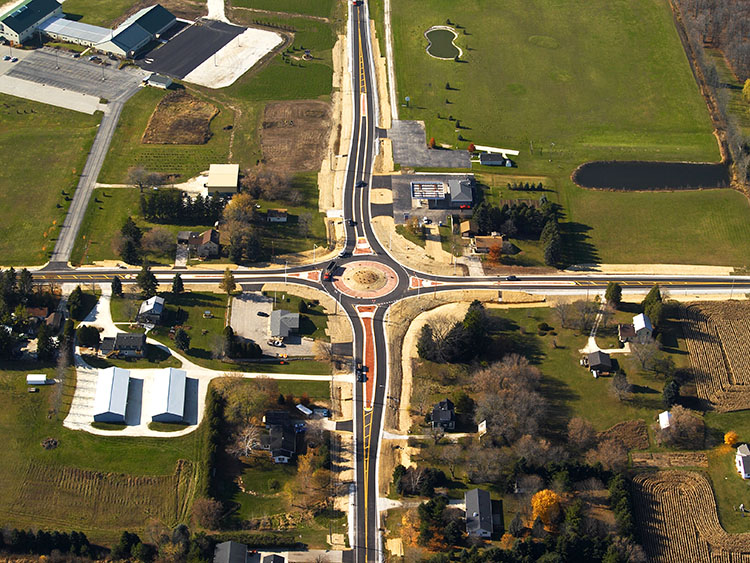
RTE | PROJECT EXPERIENCE
Roundabouts & Traffic Engineering (RTE) started in 2004 and has been leading the nation in roundabouts for nearly 20 years. Devoted to pioneering the roundabout revolution, RTE has over 500 roundabout projects in the United States. Scott Ritchie started with roundabouts in 1994 and personally has circa 300 multi-lane, 200 single lane, and 40 mini roundabouts of project design, planning, and review experience in the U.S. with nearly a hundred more outside North America. Mr. Ritchie has support staff including specific state Principal Engineer (Paul Porell, P.E.), administration personell (Tamara Blanton, E.A.), and drafting / visualization assistance staff to carry us into the next generation.
Over the past few decades, Mr. Ritchie has developed innovative design techniques substantially improving modern roundabout operations and field safety. RTE specializes in producing exceptional roundabout designs with an emphasis on smooth operational flow (better public acceptance), unique site-specific size/shapes layouts, accommodation of trucks in lane (multi-lane roundabouts), unique high speed approach techniques, and cohesive multi-modal facilities. RTE staff also have capabilities in addressing extremely close roundabout spacing and urban roundabout corridor systems for increased urban mobility, accessibility, access management, and aesthetically pleasing multi-modal roundabout projects. RTE projects may be found in both rural communities and urban city centers.
Scott Ritchie spearheaded the development of sustainable roundabout corridors, accommodation of freight trucks, mini roundabouts, high speed approaches and enhanced multi-modal transportation facilities. These innovations have been transferred into many roundabout design guidelines in use today by federal, state, and local municipalities. As a roundabout specialist, Mr. Ritchie has written and/or been involved with dozens of roundabout publications and roundabout design guidelines, taught many educational roundabout design courses, and is viewed as a leader in the industry capable of handling and conveying expert modern roundabout design theory and practices. RTE staff have been involved in the evaluation, design, modification, audit, redesign, and presentation of thousands of transportation projects and hundreds of roundabouts throughout the United States. We are confident RTE staff can assist you in your next project. Please contact us to request a list of recent projects, firm description, qualification information, and/or key staff resumes.
“Your focus determines your reality.” – Qui Gon Jinn
